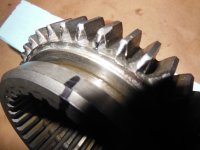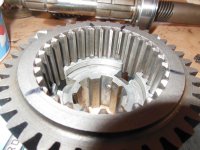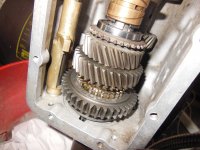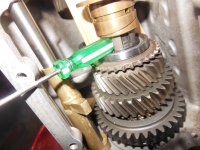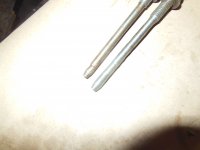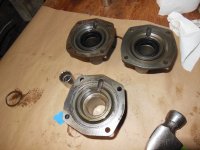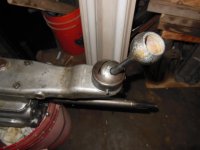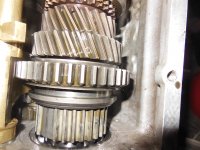“Finally, if you put a new ring in, you should use 600 grit wet or dry paper to smooth the old grooves in the gear cone. The old synchro will have left slight grooves, so they must be removed or the new ring ridges cannot grab the cone properly. There are bad synchro's out of the box, too. If, after smoothing the cone the new ring will not tightly grab the gear, try another synchro ring. If none of them grab tightly, then the cone is worn and the gear has to replaced.”
Thanks for comment and information John. Yes I totally misunderstood your comment here. I actually thought you meant the brass rings were too sharp on the inside and I think I commented on that somewhere. When actually, you were talking about the gear cone getting those little lines on it. I just need to clarify. I am getting old.
Steve
Thanks for comment and information John. Yes I totally misunderstood your comment here. I actually thought you meant the brass rings were too sharp on the inside and I think I commented on that somewhere. When actually, you were talking about the gear cone getting those little lines on it. I just need to clarify. I am getting old.
Steve

 Hi Guest!
Hi Guest!

 smilie in place of the real @
smilie in place of the real @
 Pretty Please - add it to our Events forum(s) and add to the calendar! >>
Pretty Please - add it to our Events forum(s) and add to the calendar! >> 

